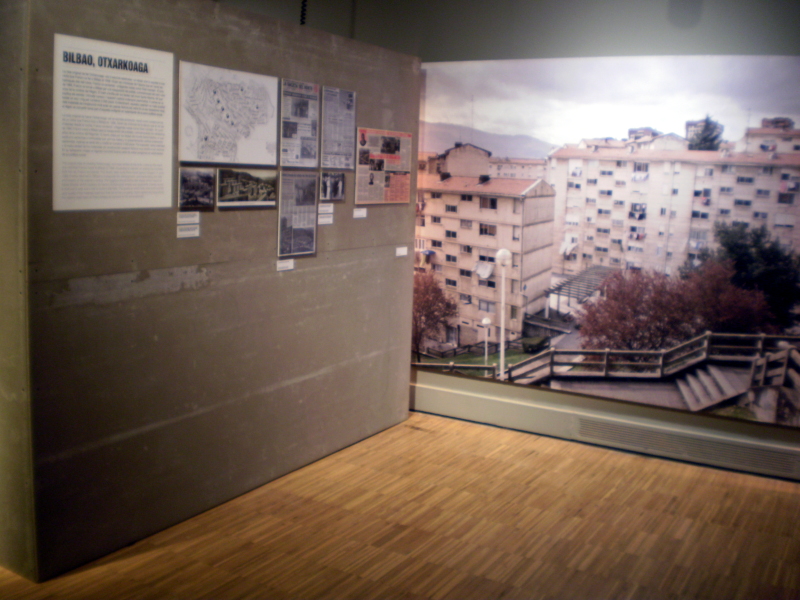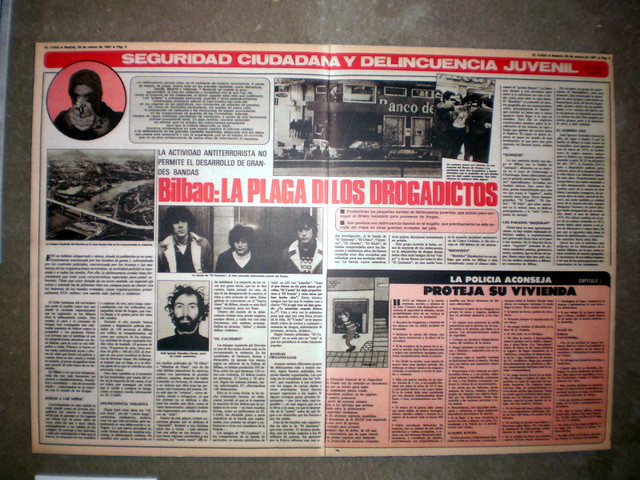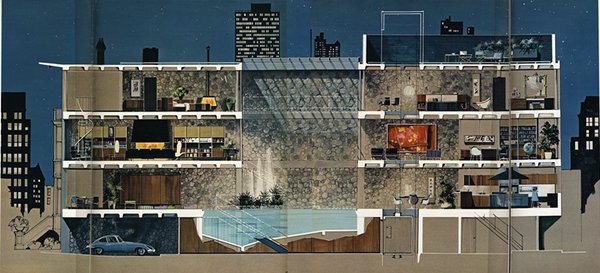
collision of galaxies. I almost did not rise above last summer when visiting the exhibition "Gangs of the 80" in Barcelona descrubrí a large photo of my grandmother's house, block No. 12, Otxarkoaga , Bilbao. The photo, along with other similar sites, is part of the section of English development districts, the urban context in which this charismatic figure emerges from the periphery to the thug that honors the exhibition, curated by Amanda and Mery costs for the CCCB and can now be seen at the Casa de Madrid Lit.
Otxarkoaga, a banal story. Built by Franco in the fifties to house immigrant families working in factories and lived in shacks Biscay at the foot of the mountains around. "That homes make them as God commands, "seems to have said, and hastily put together an entire neighborhood, in the seventies and eighties, was the most notorious of Bilbao. I dare say undeserved because at that time I still was not quite developed the threshold of normal, so do not know. It was a suburb and working class as the horse reigned everywhere, the streets were unnamed and identified by the number of buildings: I'm from the block 12, go to block 38, block like me 156.
Unlike other similar sites whose image is almost completely normalized (as Rekalde) Otxarkoaga has failed to change the reputation. Say that you come from there or even cause those split seconds of silence held for the neurons imagine what your interlocutor processing at full speed to give the appropriate commentary in terms of naturalness, cosmopolitanism, class consciousness, etc.. In short, the kind of place you do not expect to find referenced in an art center.

Criticism Gangs Expo were there: aestheticization of the marginal incision in an image of the neighborhood that does not help to regenerate ... In my view, blurred. Reconzoco quicksand that enters. But distrust of the authoritative public insists on dealing with socially sensitive issues equidistance content, which is based on a test that fails to get to talk to other parameters (eg, global) and assumes that all the tales of the working sensitivity that deviate from the official ( family honored that through hard work and sacrifice, has passed to the next screen of the social ladder) are necessarily depoliticized. We do not need another hero or more guardians of the revolution, thanks.
'm the first one gets defensive when you hear someone who never put foot in a neighborhood and say you like that exposure. I also want to split face. But while I realize that we handle aesthetic references are identical: the reasons why that person will cool the expo and the reasons why I understand that mola are the same. If free and celebratory vision of Gangs make sense (and has, since the mean of the first) is because we all understand the symbolic mechanisms that come into play without any difficulty. This is what has to go from being a poor country to a new rich (sorry, middle class), that requires us reproblematizar very tricky issues such as migration class and reformurlarlos within a framework of cultural referents movement totally popular crime and also mainstreamed in terms of class (everything from the crisis of leftist thought would go here).
Watching a film like La Haine a commercial festival of auteur cinema, cool. Looking at the MTV videos of hip-hop, which is not exactly Beverly Hills, too. Even listening to the tone the Lopez "Jenny from the block" has its charms. But treating the offender's neighborhood aesthetics as one element of our common cultural landscape, that can not. That's reappropriation inappropriate, ethically dubious, superficial and fetishizing. Exploitation English. Well, I'm glad to see the block my grandmother in a center of art and I mean it from all angles: the cultural criticism and class pride. Otxarkoaga cool, of course, yes, of course.



